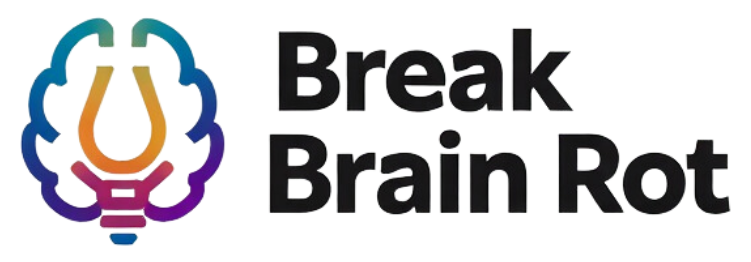Table of Contents
- Understanding the Importance of a Digital Detox
- Recognizing the Signs You Need a Digital Detox
- Practical Digital Detox Strategies for Everyday Life
- Maintaining Balance After a Detox
- Tools and Resources for a Successful Digital Detox
1. Understanding the Importance of a Digital Detox
The Rising Digital Overload
From work emails to social media updates, the average person spends over seven hours daily looking at screens. According to the World Health Organization’s screen time guidelines, extended exposure can contribute to fatigue, stress, and deteriorating sleep patterns. Your brain’s constant engagement with devices keeps it in a persistent state of alert, which can diminish concentration and increase anxiety.
Benefits of Disconnecting
Reducing screen time offers tangible rewards. When you implement digital detox strategies, you’ll likely notice improved focus, deeper sleep, and stronger in-person relationships. Without digital distractions, your brain finds room for creativity, calm, and emotional balance. This space helps you reconnect not only with your surroundings but also with your core priorities.
How Technology Affects Productivity and Mood
Studies show that excessive tech use can lower productivity, leading to scattered attention and burnout. Constant multitasking between apps and notifications disrupts your ability to enter deep work. By taking intentional time off, you rewire your routines to better manage technology — a crucial step toward sustainable productivity and technology balance.

2. Recognizing the Signs You Need a Digital Detox
Symptoms of Digital Fatigue
Do you reach for your phone the moment you wake up? Feel anxious when you can’t check notifications? These could be early symptoms of digital fatigue. When constant connectivity becomes your default mode, your ability to concentrate and relax suffers.
Emotional and Physical Indicators
Tech dependency often shows up physically: eye strain, headaches, and poor posture. Emotionally, you may feel restless, easily irritable, or detached from real-life interactions. These signs signal that technology might be dominating your time instead of supporting it.
Assessing Your Digital Habits
Tracking your online activity is a great first step. Use built-in screen time reports or apps that monitor device usage. Tools featured in Psychology Today’s digital addiction research can help you objectively analyze habits and set realistic boundaries for improvement.
3. Practical Digital Detox Strategies for Everyday Life
Setting Clear Boundaries with Technology
Start by defining tech-free zones — such as your bedroom or dining table — where devices aren’t allowed. Creating screen-free hours in the morning or before bed allows your brain to transition smoothly between rest and activity. By turning off non-essential notifications, you reduce distractions and reclaim time for meaningful focus.
Replacing Screen Time with Mindful Activities
Replace aimless scrolling with mindful activities that stimulate your mind and body. Journaling, cooking, reading, or exercising outdoors are excellent screen-free alternatives. Even spending 20 minutes in nature can help balance your digital load. Incorporate practices from mindfulness and wellness practices to anchor yourself in the present.
Implementing Gradual Digital Detox Plans
Going completely offline may not be possible for everyone. Instead, try gradual detox steps—such as reducing daily screen time by an hour each week or designating one “no-social” day per weekend. Progressive adjustments make it easier to adapt and maintain consistency in your digital wellbeing goals.
4. Maintaining Balance After a Detox
Creating Sustainable Digital Habits
Once you’ve conquered your initial detox, shift your focus toward sustainability. Reintroduce digital tools with clear intention: use them to enhance productivity or connection, not to fill idle moments. Setting daily use limits helps maintain balance without reverting to old habits.
Accountability Partners and Community Support
Share your progress with loved ones. Joining digital detox communities or workshops can help you remain consistent. Support systems provide encouragement during lapses and celebrate progress. Accountability deepens your motivation to keep technology in check.
Monitoring Long-Term Progress
Keep a digital journal to reflect on emotional changes and productivity improvements. Noting how your energy, focus, and moods evolve reinforces why you started. For additional insights, explore studies from Harvard Health on technology and mental health that reveal the long-term effects of digital moderation.
5. Tools and Resources for a Successful Digital Detox
Digital Wellness Apps and Tools
Numerous apps can help track, limit, or organize screen time. Try Forest or Freedom to cultivate focused work periods, or StayFree to monitor real-time app usage. These resources support your effort to maintain balance while staying productive.
Offline Activities and Resources
Look beyond screens for enrichment. Join local book clubs, attend art workshops, or try outdoor organizations that promote human connection. By establishing real-world hobbies, you fill your time with authenticity and community engagement.
Expert Recommendations
According to psychologists specializing in technology wellness, success begins with awareness. Experts suggest scheduling regular tech breaks, prioritizing face-to-face communication, and reflecting weekly on your consumption patterns. For more insights, check out how to improve daily focus and productivity for long-term wellness strategies.
Frequently Asked Questions
1. What are the best digital detox strategies for beginners?
Start small—charge your phone outside your bedroom, limit social media to certain hours, and take one day per week completely offline.
2. How long should a digital detox last to see real benefits?
Even short breaks, like weekend detoxes, can yield improvements in focus and sleep. For lasting results, aim for consistent weekly disconnection periods.
3. Can I do a digital detox without cutting all technology?
Absolutely. The goal is mindful use, not total avoidance. Limit non-productive browsing while keeping necessary tools for work or communication.
4. How can I stay motivated during a digital detox?
Track your progress and celebrate milestones. Partnering with friends or joining groups keeps you accountable and inspired.
5. What tools help most during digital detoxes?
Apps like Forest, Moment, or Freedom help monitor and manage use. Combined with physical activities, they enhance the detox experience.
Conclusion
Engaging in thoughtful digital detox strategies can profoundly enhance your mental clarity, sleep quality, and daily satisfaction. By observing your screen time, creating intentional boundaries, and substituting technology with mindful habits, you take control of your attention and energy. Remember, the goal isn’t to abandon technology—it’s to use it intentionally and healthily. Start a weekend detox challenge today, discover what true balance feels like, and share your progress to inspire others on their journey toward digital wellbeing.

